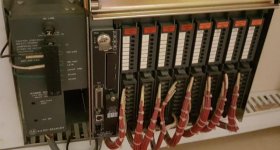If you take a look at the picture attached you can see that both I:000/0-4 and O:000/0-4 are used.
I was under the impression that the "000" in 0:000/0 was at least a logical slot number and therefore that any bit in the input and output files can only be used by either input or output.
The other issue is that with O:000/0-4 the total number of output bits goes to 36 and there are only 32 outputs points on the physical system as seen in the other attachment.
Any help is appreciated!


I was under the impression that the "000" in 0:000/0 was at least a logical slot number and therefore that any bit in the input and output files can only be used by either input or output.
The other issue is that with O:000/0-4 the total number of output bits goes to 36 and there are only 32 outputs points on the physical system as seen in the other attachment.
Any help is appreciated!





